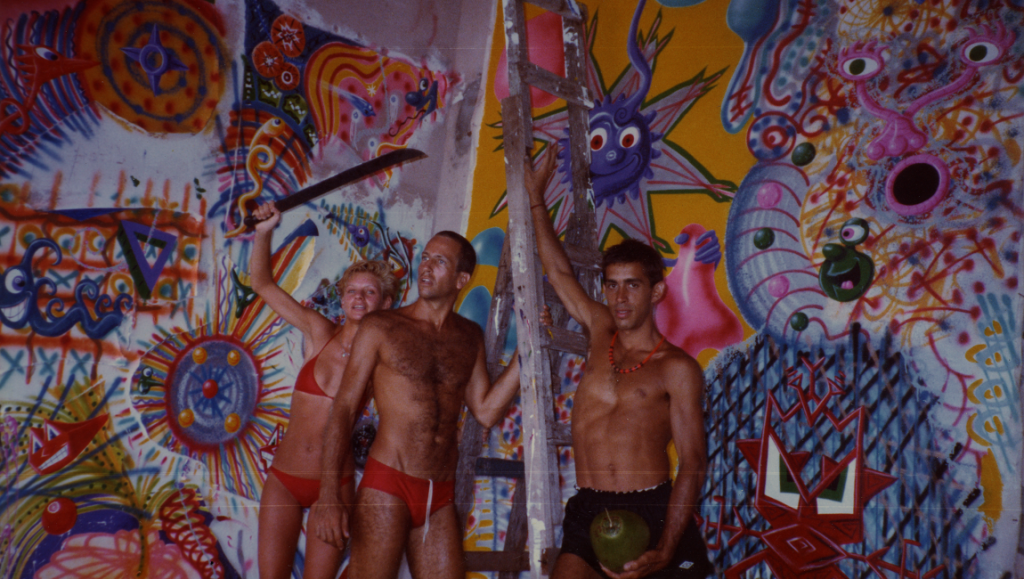Given its material, When Worlds Collide should be a far more impressive visual document.
Among the marquee names of the 1980s New York art scene, a tragically low number are still alive today. Iconic figures like Keith Haring and Jean-Michel Basquiat pioneered artistic movements that saw them enshrined in history, and their early deaths (at the hands of the AIDS and drug use, respectively), emblematic as they were of the chaotic times, saw them almost immediately immortalized. But what about the artists who did survive? Kenny Scharf: When Worlds Collide chronicles one such figure, the oft-forgotten contemporary of Basquiat and Haring, throughout his career as a working artist, tracking the evolution of the East Village, the New York art scene, and Scharf’s interweaving personal and professional lives.
When Worlds Collide certainly can’t be faulted for lack of ambition. Taking as its subject several decades of cataclysmic social change, and confronting everything from the AIDS epidemic to inter-community squabbles, the documentary effectively captures the vibrancy and diversity of its setting. The directors cast Scharf, Haring, and Basquiat as unapologetically competitive and ambitious fellows, and the documentary is at its best when observing the transition stages in each artist’s career, all told with an added layer of nostalgia from a present-day vantage that only Scharf is alive to see. When ambition falls away with the deaths of Haring and Basquiat, along with the simultaneous burst of Scharf’s career bubble, what is left is the latter’s sincere love for his work and the work of his contemporaries. When Worlds Collide, then, ultimately paints the portrait of a survivor, one who endures not only the deaths of his friends, but also the hardships of his professional field, and finally finds joy not in conventional career success, but in repurposing garbage, painting strangers’ cars and jackets, and making art that is truly for the people.
Co-directed by Max Basch and Scharf’s daughter Malia Scharf, the documentary proposes an odd contradiction, with Scharf the younger attempting to both delve into the emotional realities of her father’s past while also pushing herself to the margins, allowing the artist to take center stage, a privilege he seems to have rarely had, overshadowed at his peak by Haring and Basquiat. In theory, this uniquely intimate perspective should elevate the material, but it instead ends up limiting it, casting Scharf in a way that engenders soft feelings of fondness, and little more. Understandable, of course (and Scharf seems plenty likeable), but the perspective does not exactly make for compelling viewing. Similarly, the film goes to no great lengths to find any overly compelling way to showcase Scharf’s vivid works, instead letting them remain static and bringing nothing much stylistically to the table. There is, of course, the argument that any amount of visual trickery or re-imagining might distract from the integrity of Scharf’s work, or imply that it doesn’t stand well enough on its own, but work as inspired by film and television as Scharf’s seems ripe for a cinematic re-interpretation, and for a visualization as chaotic and pleasurable as the original paintings. Ultimately, When Worlds Collide is just like its static shots of Scharf’s paintings — a wide-ranging look at a fascinating subject, one that embraces scope over depth, and sadly lacks the visual flair that its subject is crying out for.
Published as part of Before We Vanish | June 2021.


Comments are closed.